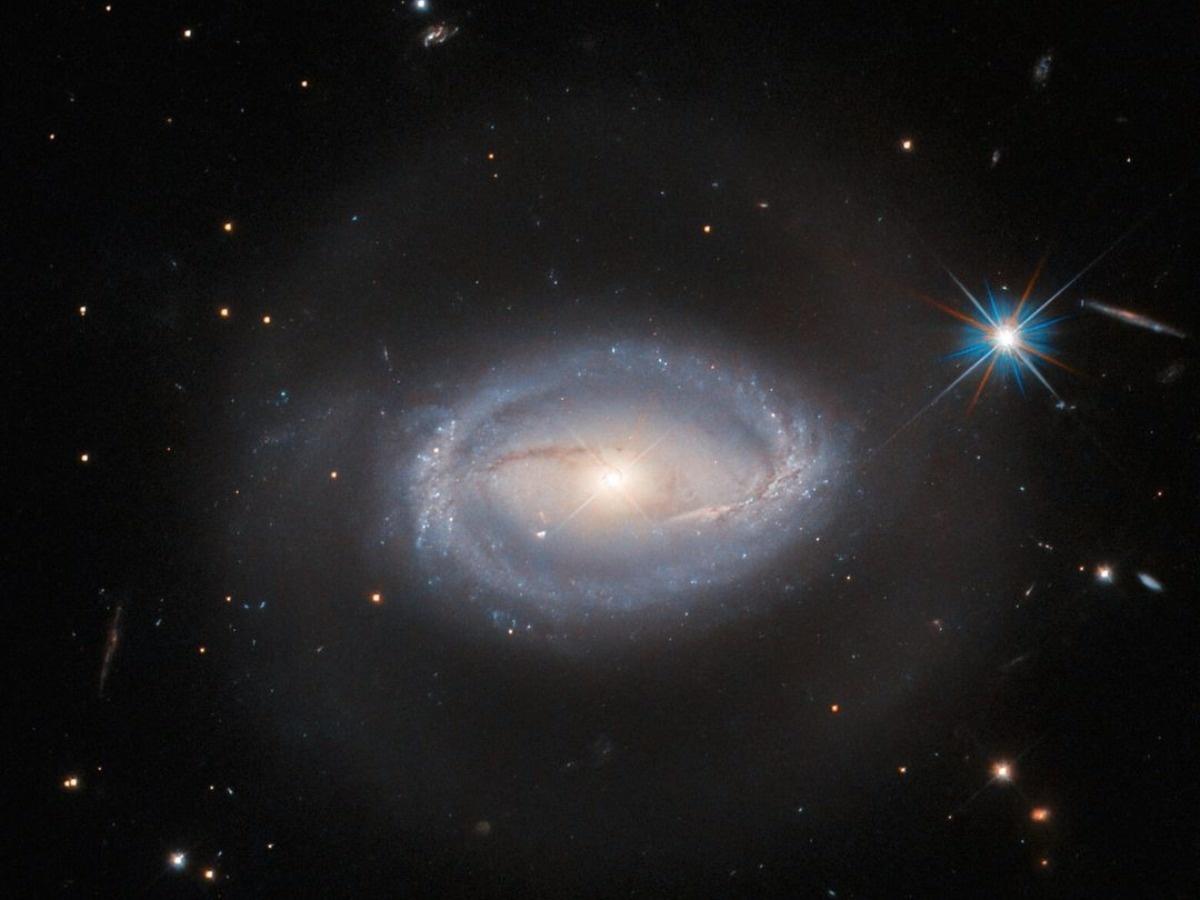The incredible images.
A newly released image from the Hubble Space Telescope shows Z 229-15, which, at first glance, appears to be simply a spiral galaxy given its two spiral arms. But it is much, much more. Z 229-15 is one of those objects that fits into several classifications, according to a statement released by the European Space Agency (ESA). “Z 229-15 is one of those interesting celestial objects that, if you choose to research it, you will find defined as many different things.” While it is impossible to give a single classification for Z 229-15, there are several overlapping definitions that together describe this beautiful celestial object. Making it even more interesting is its incredibly bright center. An AGN is a region in the center of a galaxy that is exceptionally bright due to a supermassive black hole at its center. It is not the black hole itself that is so bright, but rather all the material in the galaxy that has been trapped in a rotating disk around it, having been pulled towards the black hole by its intense gravitational pull. That disk heats up and emits enormous amounts of energy across the electromagnetic spectrum, resulting in brightness. And that’s not all. The AGN of Z 229-15 is also a quasar, which is a specific subtype of AGN.
The criteria for classifying an AGN as a quasar include extreme luminosity and a great distance from Earth, obviously on a cosmic scale. As you can see from the Hubble image, Z 229-15 is very bright indeed in the center. And since it’s 390 million light-years from Earth, it’s far enough away to be considered a quasar (although that distance means it’s actually a “near” quasar). Most quasars are so bright that they blur our view of the stars in the galaxy. When a quasar is not as bright, allowing us to observe stars, it is called a Seyfert galaxy. And by the stars visible in its Hubble portrait, Z 229-15 is definitely a Seyfert galaxy as well. So, technically, Z 229-15 is a Seyfert galaxy with a quasar subclass AGN.
